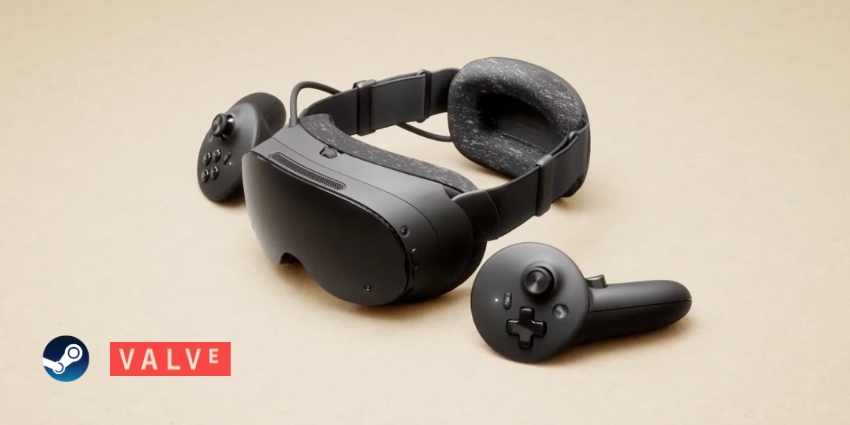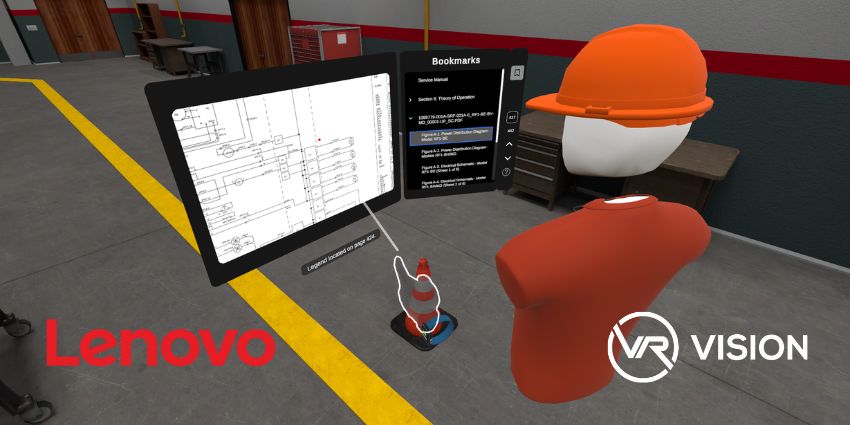What is a virtual reality camera, how does it work, and how can you choose the right model to capture awe-inspiring XR content? Here’s everything you need to know.
Virtual reality is quickly becoming a mainstream technology, not just for consumers, but for businesses investing in new strategies for immersive collaboration, too. However, for virtual reality to truly thrive as part of the everyday tech stack, we need more than just ergonomic, high-performance headsets. We need incredible content.
There’s plenty of great software available for developers who want to build impressive virtual worlds, like the Unity and Unreal kits. But what if you want to bring genuine real-world images and videos into VR? That’s where virtual reality cameras come in.
What is a Virtual Reality Camera?
A virtual reality camera (or 360-degree camera) is a specialist technology that allows users to capture a complete view of a scene in the form of a video or photo. The camera records video from every angle, so you can explore it from multiple perspectives when you rewatch your content.
This isn’t an entirely new concept; many top smartphones have enabled 360-degree capturing options for a while. Plus, plenty of companies use 360-degree video to immerse customers in shopping experiences. You might have stumbled onto a real estate website that allows you to explore a room by clicking an arrow button, for instance.
In the VR landscape, a 360-degree camera allows creators to capture real-world content to create immersive experiences. A developer creating an app for collaboration, could use their camera to capture a 360-degree view of an office or warehouse, creating a digital twin for teams in the metaverse.
Virtual reality cameras work by leveraging multiple wide-angle lenses at the same time. Imagine someone taking pictures of a sphere from the inside, then stitching them all together. That’s what you get with a VR camera. Obviously, the best way to view these 360-degree images and videos is with a VR headset, which allows you to place yourself in the middle of that “sphere”.
With a VR headset, instead of having to tap a button to move around an image, or spin around with your smartphone, you can immerse yourself inside of the scene.
Virtual Reality Camera Content: What Can You Create?
Virtual reality cameras offer creators an intuitive way to create immersive, realistic scenes for VR users, but there are some limitations. Since you’re recording the real world with one of these devices, you can’t create “interactive” experiences.
However, developers can overlay real-world images with virtual assets using software SDKs and toolkits from companies like Unity. Most of the time, though, VR cameras are used to create immersive records of real events, like concerts or conferences.
With cutting-edge streaming platforms, companies can sometimes share these experiences in real-time with users wearing VR headsets.
360-degree cameras are also common for “virtual tours” conducted by hospitality, real estate, and travel companies. These tours allow users to “explore” an environment remotely.
What to Look for in a Virtual Reality Camera
Choosing the right virtual reality camera starts with identifying what you want to accomplish. If you’re just capturing 360-degree videos to share with friends, a consumer-grade option like the GoPro Max would probably be more than enough.
However, for companies that want to create immersive digital twins of real-world spaces, a more advanced system might be essential. You might even want to ensure that your VR camera is supported by cutting-edge software, like Varjo Teleport, for streamlined digital twin development.
Here are some of the points to consider when comparing your options.
The Virtual Reality Camera Capture Mode
Virtual reality cameras come in various models, capable of capturing many different kinds of content. Though these cameras all give you a 360-degree view of an environment, not every camera offers a 3D experience.
2D-360 degree cameras, for instance, or Monoscopic 360 degree cameras make it easier to produce content. However, they can create flatter images in VR headsets. You can capture 2D 360-degree content with a range of consumer-grade and dual lens cameras, and stitching the images together generally requires fewer computing resources.
Alternatively, 3D-360 degree cameras usually come in high-end rigs with 6 or more lenses, and generate huge amounts of data, to create a more immersive experience.
Resolution and Frame Rate
Obviously, the better the resolution and frame rate of your virtual reality camera, the better the resulting image or video will be. Most experts, like Meta, recommend a frame rate of at least 30FPS, although higher frame rates will create a smoother experience for users.
The higher the frame rate, the more natural it will feel for users to look around a 360-degree space. Similarly, the greater the resolution of your camera, the more impressive the image will look. It’s worth considering the resolution that top-end VR devices like the Apple Vision Pro can support when making your choice.
Although most leading VR headsets support 4K resolution, choosing a higher option, like 8K resolution, will give users a lot more clarity.
Sensor Size and Image Stitching
Virtual reality cameras typically require multiple sensors and lenses to create “immersive” images. Smaller sensors don’t always perform well in lower light, but they can allow users to build smaller rigs that place lenses and sensors closer together, which improves the stitching process.
Larger sensors can capture more content in low-light spaces, such as indoors, but they can often be more expensive. In both cases, you may still need advanced stitching software to combine the images from multiple lenses into a single 360-degree image.
Convenience
Using a 360-degree camera to capture VR content will always be more complex than using a standard camera. However, various features can make these devices more convenient. For instance, compatibility with your existing editing and development software is a must.
Plus, choosing a camera that’s compact and lightweight ensures you can capture content more readily, without having to carry huge amounts of equipment with you. It’s also worth looking at battery life, to ensure your hardware doesn’t run out of juice when you’re in the midst of a shoot.
5 Virtual Reality Cameras to Consider
Based on the factors mentioned above, we assessed some of the top virtual reality cameras available to creators today. Here are some of the best options you can consider right now.
1. Insta360 X4
By far the most popular virtual reality camera for XR enthusiasts, the Insta360 X4 is an 8K resolution, 360-degree action camera, promising exceptional image quality. It features HDR camera features for environments with mixed lighting and slow-motion and time-lapse features.
This camera is compact, portable, and waterproof, so it’s great for shooting content in various environments. Another great thing about this device is the software that comes with it. Creators get built-in tools for editing on Mac, PC, and mobile devices. You’ll also be able to integrate the software with Adobe solutions like Premiere and Final Cut Pro.
Plus, this camera comes with AI-powered subject tracking, which helps you follow the most important objects in your image with minimal effort.
Pros:
- Easy to transport and use
- Waterproof, durable design
- Large touch screen included
- Powerful editing software
- 8K video capture
Cons:
- Expensive accessories
- Limited battery
2. Kandao QooCam 3 Ultra
Building on the success of the previous QooCam 3, the QooCam 3 Ultra is a company 360-degree camera with built-in super steady stabilization. This makes it ideal for capturing smoother content if you’re worried about VR sickness. You get an 8K resolution and the option to capture spatial audio for immersive environments.
Plus, the Kandao camera supports HLG and HDR panoramic workflows. It can easily capture more than 1 billion colors and fine details for highly realistic experiences. One other great thing about this camera is that it’s extremely easy to use and even delivers excellent results in low-light settings.
Still, it is a slightly pricier option than the QooCam 3, which may make it less appealing to beginners in the XR content creation space.
Pros:
- Exceptional 8K resolution
- 10-bit video
- Stabilization built-in
- Waterproof and dust-proof
- Included spatial audio capture
Cons:
- Limited software included
- Slightly expensive for budget-conscious consumers
3. Ricoh Theta Z1
The Ricoh Theta Z1 is one of the more “premium” virtual reality cameras we found, with a price tag of over $1,000. Still, its 23-megapixel resolution is incredible, and you get highly accurate image stitching software built in. Ricoh’s camera supports various shooting scenarios, with multiple modes to choose from. Plus, it has a cutting-edge lens that reduces ghosting and flare.
Unlike previous Ricoh cameras, the Theta Z1 supports RAW image formats and comes with a 4-channel microphone for spatial sound. You can use the dedicated editing apps included with the camera or a range of other tools, like Adobe PhotoShop or LightRoom.
Plus, Ricoh allows users to upload their content directly to a dedicated website to share their images with all kinds of users, regardless of whether they have a VR headset.
Pros:
- Excellent software and compatibility
- Fantastic image resolution
- Powerful lenses and sensors
- Included spatial audio
- Compact and durable design
Cons:
- Expensive pricing
- Short battery life
4. GoPro Max
The GoPro Max has been around for much longer than some of the other virtual reality cameras on this list. Despite being released in 2019, it’s still an impressive device. You can shoot up to 6K video in 360-degree mode, and there’s an included app to help you reframe and tweak your footage.
The GoPro Max has a fantastic six-microphone setup for spatial audio and a large battery for all-day shooting. It also has the added benefit of being a highly compact camera that you can mount onto a range of devices (including helmets). The GoPro is also waterproof for up to 16 feet, making it great for shooting content in the ocean.
The downside is that although this device is pretty pricey, it still lacks a dedicated 4K video capture option, and the frame rate tops out at 60FPS.
Pros:
- Strong 360-degree video capture
- Included stabilization
- Waterproof and rugged design
- Excellent in-camera audio
- Compact design
Cons:
- Limited resolution compared to some alternatives
- Video content may require more editing
5. Trisio Lite2
The Trisio Lite2 is one of the few cameras on this list specially designed for professionals. It was built for companies that need to create static virtual tours of spaces, such as real estate agents. This simple and lightweight device is effortless to use, and it comes with a powerful 8K resolution. Plus, there’s a built-in HDR mode for excellent high-contrast content, even in low light.
Although this device isn’t as robust ass some alternatives, it does make it simple to capture attractive videos and images for a wide range of use cases. Trisio’s clients regularly use the hardware for hospitality tours, construction, and store displays.
Plus, the Lite2 also features “AnyScene” technology, which automatically adjusts the final panorama you capture based on different lighting conditions. It’s also a lot more affordable than some of the options we covered here, costing around $400-$500.
Pros:
- Affordable pricing
- Detailed 32MP image capture
- Excellent high-contrast pictures
- No stitching marks in content
- Useful “AnyScene” mode
Cons:
- Can’t capture in RAW
- Limited video functionality
The Future of Virtual Reality Cameras
Virtual reality cameras offer creators a unique way to create immersive experiences in extended reality, with real world content. Although these cameras don’t eliminate the need for software like Unity and Unreal, they do open the door to new experiences with digital twins.
As companies, developers and app designers continue to explore new ways to make virtual reality experiences more compelling, the demand for high-quality 360-degree cameras will increase. We can’t wait to see what innovators build in the years ahead.







